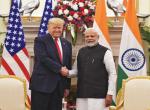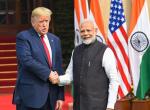Selig Harrison’s report on the deployment of 7-11,000 Chinese troops in the Gilgit Region of POK has caused considerable concern in India. By way of denial the Pakistanis and Chinese have not refuted the presence of the troops but their purpose. The Pakistanis claimed they were there to assist in “Flood Control”. Zhao Gang Cheng of the Shanghai based Institute of International Studies stated that the purpose was “for considerations of economy and energy and not to pose a threat to anyone”.
The Gwadar- Karakoram triple rail, road and pipeline link is a key component of the Chinese “Malacca By-pass Strategy”. It must be noted that 80 percent of China’s energy imports are transported via the sea route through the critical choke point formed by the Malacca, Sunda and Lombok Straits near Malaysia and Indonesia. The Chinese are acutely conscious of the extreme vulnerability of this critical SLOC (Sea Line of Communications) to disruption by any hostile Navy in the event of a conflict. China’s dependence on imported oil is now to the tune of 56%. By 2015 this will go up to two thirds of China’s energy needs and by 2030 this would touch fourth fifths of China’s needs. The Persian Gulf, Africa and North America meet the bulk of China’s oil needs. Hence the Chinese paranoia about the extreme vulnerability of its energy imports as they are funneled through the critical choke points of Malacca. China has consciously been trying to reduce this major strategic vulnerability. To achieve a supply chain that is less vulnerable to disruption from outside factors, China has, over the past two decades, devised a strategy that seeks to re-route as much of its oil inflows via overland routes and pipelines. A key component of this Chinese Strategy hinges upon its investment in the Gwadar Port of Pakistan and the frenzied construction/upgradation of a triple tier rail and road highway along with an oil /gas pipeline which will carry Iranian gas to China’s Western Provinces. Thus a bulk of the Persian Gulf oil could be diverted from the two week long voyage( 16-25 days) via Malacca and would flow over land in just48hrs via this Gwadar-Karakoram highway in the event of a disruption of the Malacca Sea route. This will reduce a 16500km journey to just 2500 kms. Another component of this strategy is China’s investment in the development of ports on the coast of Myanmar and dredging of the Irawady River to take 500 tons barges coupled with oil pipelines to reroute the energy traffic flows as and when needed. There are proposed oil pipelines along the Isthmus of Kraa and oil storage facilities being constructed in Malaysia, to cater for a closure of the Malacca Straits. This Chinese oil and gas artery via Pakistan and the Shia rebellious province of Gilgit in POK has now become a core Chinese interest and a vital strategic artery. That still confines it to a matter of economy and energy and does not make it a military threat. Unfortunately, the Chinese have an ingrained habit of defining core interests and vital communications arteries. Overtime they become prepared to launch “self defense counter attacks “to safeguard these arteries.
There has been an alarming shift in the Chinese stance over J&K. From complete neutrality in the Kargil War of 1999, China now assertively claims J&K as disputed territory. That however does not prevent it from executing major infrastructure, energy and possibly military projects in POK, which is equally (if not more) a disputed territory. However it does induce it to staple visas on the pass ports of Indian citizens from the state of J&K. It has now deliberately escalated the level of provocation by in effect denying a visa to Lt Gen Jaswal (Army Commander Northern Command) on the pretext that he commands troops in J&K. The same logic did not apply to the Eastern Army Commander who commands our forces in Arunachal Pradesh. This is not a minor shift of stance or nuance. Nor does it apply to visiting Generals of the Pakistan Army. It is a major and deliberate provocation and upping of the ante. China is now defining an ever increasing list of core areas/ red lines. Taiwan, Tibet and now South China Sea, East China Sea and Yellow Sea are all core interests where it will brook no interference. Do we have any core interests left any more? Should we not define our red lines in J&K now that both Pakistan and China appear to see our political will as crumbling?
The Chinese troops in Gilgit are reportedly involved in the upgradation of the existing Karakoram Highway to double lane status and the addition of a new railroad and oil/gas pipeline. The most baffling part is the construction of 22 tunnels to which even the Pakistani troops are not allowed. There is intense speculation on what these tunnels are meant for. One speculation is that these are designed to store the new Air-craft carrier killer Dong –Feng -21D Anti- ship missiles. These are road- mobile missiles( with a range of over 3000kms) which could move down the Karakoram highway to attack US or Indian Aircraft carriers in the Persian Gulf and thereby form a key component of the Chinese Anti- Acess Strategy. If that is so it would be a very strange way for Pakistan to repay its American patrons for their most generous aid. The positioning of Dong Feng Missiles will also have a significant impact on our naval operations in the Arabian Sea and the Persian Gulf. It could make our Aircraft Carrier Battle Groups and Principle Surface Combatants very vulnerable to these Anti-ship missiles.
Seen as part of a developing pattern, the Chinese moves have serious and long term implications which we can not afford to brush under the carpet. There is an urgent need to speed up our arms acquisition process. We can not postpone them to a distant date in 2025. Given the recent developments there could be sudden and non-linear changes on our periphery and we can ill afford to be caught flat footed a la 1962. The 2025 date line is based on the presumption that we must complete our economic reconstruction first and then build up our military muscle to take on all comers by 2025. Will our adversaries patiently wait and watch till then? This decade could be critical in terms of sudden and non-linear changes. It would be highly inadvisable to open gaping windows of vulnerability which invite attack. The reports of a sizeable Chinese military presence in Gilgit and its change in stance on the status of J&K are an ominous shift of pattern that is cause for serious disquiet. Though no panic reactions are called for, there is a need for reaching out diplomatically to other nations in Asia (eg. Japan, South Korea, Vietnam and other ASEAN countries) which are equally discomfited by the new Chinese assertiveness and aggression. Above all, there is a need to keep our powder dry and take suitable military precautions well in time.
References :
1. Selig. S Harrison “Chinas Discreet Hold on Pakistan’s Northern Borderlands”, New York Times, 27 Aug 10.
2. ibid
3. Military and Security Developments involving the Peoples Republic of China 2010. US Department of Defense Annual Report to the Congress.
4. ibid
5. ibid
6. "No Chinese Troops in POK, Pak Envoy” Times of India, 1 Sep 10, p13.
7. "Army readies for Chinese threat”, Hindustan Times, 30 Aug 10, p15.
8. China takes de facto Control of Restive Region near POK, Times of India, 29 Aug 10, p13
9. "General Snub, Chinese Envoy Pleads Ignorance”, Hindustan Times, 29 Aug 10.
10. "China for Indian Ocean Supremacy”, Hindustan Times, 31 Aug 10, pg.19.









Post new comment